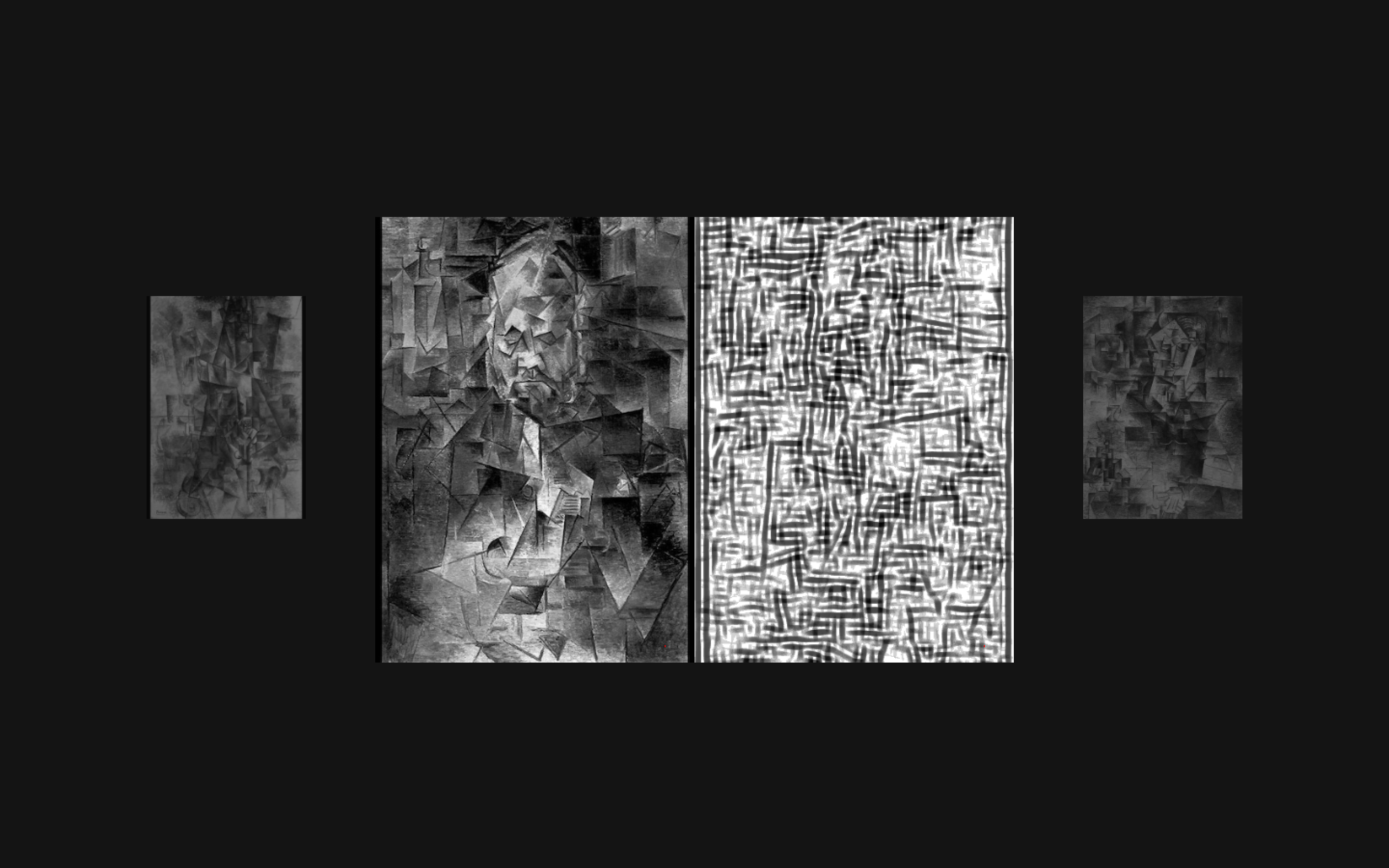Héctor Rodriguez
The Uncertainty Principle, (2018)

The Uncertainty Principle consists of videos and an interactive application about information and uncertainty in the domain of image analysis. The works were produced by applying a set of 2D Gabor filters to still and moving images. Gabor filters identify various kinds of edges – horizontal, vertical, and diagonal – by responding to specific visual frequencies in an image.
One video, entitled Rain, was made by recognizing rain streaks in the opening sequence of Wong Kar-Wai’s film The Grandmaster. Used in combination with Non-Negative Matrix Factorization (NNMF), the Gabor filters responded to the visual frequencies that correspond to vertical edges on the image and removed most other details in the sequence. Empty space between rain streaks suggests the bodies of the fighters. The human figure is absent yet somehow present, referencing the role of empty space in Chinese philosophy and visual art. The original movie soundtrack involved a highly obtrusive pounding music, mixed with effects and diegetic sounds. We also used NNMF for blind audio source separation, and then manually removed those tracks that contained music, preserving only the diegetic sounds.
A second video, Folds, was made by repeatedly applying a single Gabor filter to a short segment from Ingmar Bergman’s film Persona. The scene involves a boy moving on a bed, and the filters highlight the visual movement of the folds on the bedsheet. The repetitive structure of the video cues the viewer to pay close attention, both to the texture of the image and to the distinctive effects of the different edge-detectors.
The interactive application allows people to explore and experiment with the application of different filters to images in a database. The interactor can choose which filter to apply, and observe the resulting visual description of the image.
The work is an example of self-reflexive technology. A technology, in this case the Gabor filters, is used not merely as a tool but as a formative context.